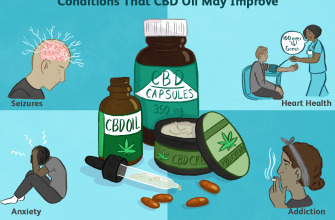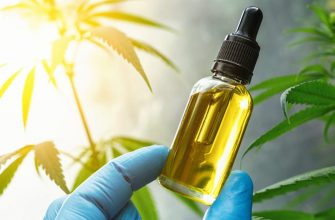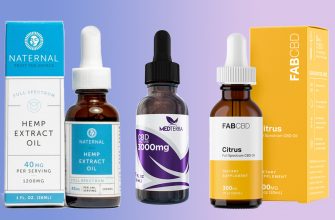How does CBD – Cannabidiol work?
Cannabidiol (CBD), the non-intoxicating component of the cannabis plant, has generated considerable interest among scientists and physicians in recent years, but how CBD exerts its therapeutic effects at the molecular level is still being elucidated. Cannabidiol is a pleiotropic drug in the sense that it produces multiple effects through multiple molecular pathways. More than 65 molecular targets of CBD have been identified in the scientific literature.
Although CBD has little binding affinity for either of the two cannabinoid receptors (CB1 and CB2), cannabidiol modulates several non-cannabinoid receptors and ion channels. CBD also acts through various receptor-independent pathways—for example, by delaying the reuptake of endogenous neurotransmitters (such as anandamide and adenosine) and by enhancing or inhibiting the binding action of certain G-protein coupled receptors.
Here are some of the ways CBD delivers its diverse therapeutic effects.
Serotonin Receptors
José Alexander Crippa and colleagues at the University of São Paulo in Brazil and King’s College London have conducted groundbreaking research on CBD and the neural correlates of anxiety. At high concentrations, CBD directly activates the 5-HT1A (hydroxytryptamine) serotonin receptor, thus giving it a calming effect. This G-linked protein receptor is involved in a variety of biological and neurological processes, including (but not limited to) anxiety, addiction, appetite, sleep, pain perception, nausea, and vomiting.
5-HT1A is a member of the 5-HT receptor family, which is activated by the neurotransmitter serotonin. Found in both the central and peripheral nervous systems, 5-HT receptors trigger various intracellular chemical message cascades, causing either an excitatory or inhibitory response, depending on the chemical context of the message.
CBDA [Каннабидиоловая кислота], the raw, unheated version of CBD found in the cannabis plant also has a strong affinity for the 5-HT1A receptor (even more than CBD). Preclinical studies show that CBDA is a powerful antiemetic, more potent than CBD or THC, which also have anti-nausea properties.
Vanilloid Receptors
CBD interacts directly with various ion channels to provide a therapeutic effect. CBD, for example, binds to TRPV1 receptors, which also function as ion channels. TRPV1 is known to mediate pain perception, inflammation, and body temperature.
vanilloid cannabinoid receptor
TRPV is the technical abbreviation for “subfamily V cation channel transient receptor potential.” TRPV1 is one of several dozen TRP (pronounced “trip”) receptor variants or subfamilies that mediate the effects of a wide variety of herbal medicines.
Scientists also refer to TRPV1 as the “vanilloid receptor,” named after the fragrant vanilla bean. Vanilla contains eugenol, an essential oil that has antiseptic and analgesic properties and helps unclog blood vessels. Historically, vanilla beans have been used as a folk remedy for headaches.
CBD binds to TRPV1, which can influence the perception of pain.
Capsaicin – the pungent compound in hot chili peppers – activates the TRPV1 receptor. Anandamide, an endogenous cannabinoid, is also a TRPV1 agonist.
GPR55 orphan receptors
While cannabidiol directly activates the 5-HT1A serotonin receptor and several TRPV ion channels, some research suggests that CBD functions as an antagonist that blocks or deactivates another G protein-coupled receptor known as GPR55.
GPR55 has been called the “orphan receptor” because scientists are still unsure if it belongs to a larger family of receptors. GPR55 is widely expressed in the brain, especially in the cerebellum. It is involved in the modulation of blood pressure and bone density, among other physiological processes.
GPR55 promotes the function of osteoclast cells, which facilitates bone reabsorption. Overactive GPR55 receptor signaling is associated with osteoporosis.
GPR55, when activated, also promotes cancer cell proliferation, according to a 2010 study by researchers at the Chinese Academy of Sciences in Shanghai. This receptor is expressed in various types of cancer.
CBD is a GPR55 antagonist, University of Aberdeen scientist Ruth Ross reported at the 2010 conference of the International Cannabinoid Research Society in Lund, Sweden. By blocking GPR55 signaling, CBD can reduce both bone reabsorption and cancer cell proliferation.
PPARs-nuclear receptors
CBD also has anti-cancer effects by activating PPARs [рецепторы, активируемые пролифератором пероксисом]located on the surface of the cell nucleus. Activation of a receptor known as PPAR-gamma has an antiproliferative effect as well as the ability to induce tumor regression in human lung cancer cell lines. Activation of PPAR-gamma destroys amyloid beta plaque, a key molecule associated with the development of Alzheimer’s disease. This is one reason why cannabidiol, a PPAR-gamma agonist, could be a useful drug for Alzheimer’s patients.
PPAR receptors also regulate genes that are involved in energy homeostasis, lipid uptake, insulin sensitivity, and other metabolic functions. Diabetics, accordingly, can benefit from a CBD-rich treatment regimen.
CBD as a reuptake inhibitor
How does CBD, an exogenous plant compound, get inside the human cell to bind to the nuclear receptor? First, it must pass through the cell membrane, attaching itself to a fatty acid-binding protein (FABP) that accompanies various lipid molecules into the cell. These intracellular transport molecules also escort tetrahydrocannabinol (THC) and the brain’s own marijuana-like molecules, the endocannabinoids anandamide and 2AG, across the membrane to multiple targets within the cell. CBD and THC modulate nuclear surface receptors that regulate gene expression and mitochondrial activity.
CBD also has an anti-cancer effect by activating PPAR on the surface of the cell nucleus.
Cannabidiol appears to have a strong affinity for three kinds of FABPs, and CBD competes with our endocannabinoids, which are fatty acids, for the same transport molecules. Once inside the cell, anandamide is cleaved by FAAH [гидролазой амидов жирных кислот], a metabolic enzyme, as part of its natural molecular life cycle. But CBD interferes with this process by reducing anandamide’s access to FABP transport molecules and delaying the passage of endocannabinoids into the cell.
According to a group of scientists at Stony Brook University, CBD functions as an anandamide reuptake and breakdown inhibitor, thereby increasing endocannabinoid levels in the brain’s synapses. Enhancing endocannabinoid tone through reuptake inhibition may be a key mechanism by which CBD exerts neuroprotective effects against seizures, as well as many other health benefits.
The anti-inflammatory and calming effects of CBD are partly due to its inhibition of adenosine reuptake. By delaying the reuptake of this neurotransmitter, CBD increases levels of adenosine in the brain, which regulates the activity of adenosine receptors. Adenosine receptors A1a and A2A play an important role in cardiovascular function by regulating myocardial oxygen consumption and coronary blood flow. These receptors have broad anti-inflammatory effects throughout the body.
CBD as an allosteric modulator
CBD also functions as an allosteric receptor modulator, which means that it can either enhance or inhibit the signaling of the receptor by changing its shape.
Australian scientists report that CBD acts as a “positive allosteric modulator” of the GABA receptor. In other words, CBD interacts with the GABA receptor in a way that enhances the receptor’s affinity for its primary endogenous agonist, gamma-aminobutyric acid (GABA), which is the major inhibitory neurotransmitter in the mammalian central nervous system. The sedative effects of Valium and other benzos are mediated by transmission of GABA receptors. CBD reduces anxiety by altering the shape of the GABA receptor in a way that enhances the natural calming effect of GABA.
NON-PSYCHOACTIVE CBD allosteric modulator
Canadian scientists have defined CBD as a “negative allosteric modulator” of the cannabinoid CB1 receptor, which is located in the brain and central nervous system. While cannabidiol does not bind directly to the CB1 receptor as THC does, CBD interacts allosterically with CB1 and reshapes the receptor in a way that impairs the ability of CB1 to bind to THC.
As a negative allosteric modulator of the CB1 receptor, CBD lowers the ceiling on THC psychoactivity – which is why people don’t feel as “high” when using CBD-rich cannabis compared to when they consume the THC-dominant drug. A CBD-rich product with a small amount of THC can deliver therapeutic benefits without being euphoric or dysphoric.




